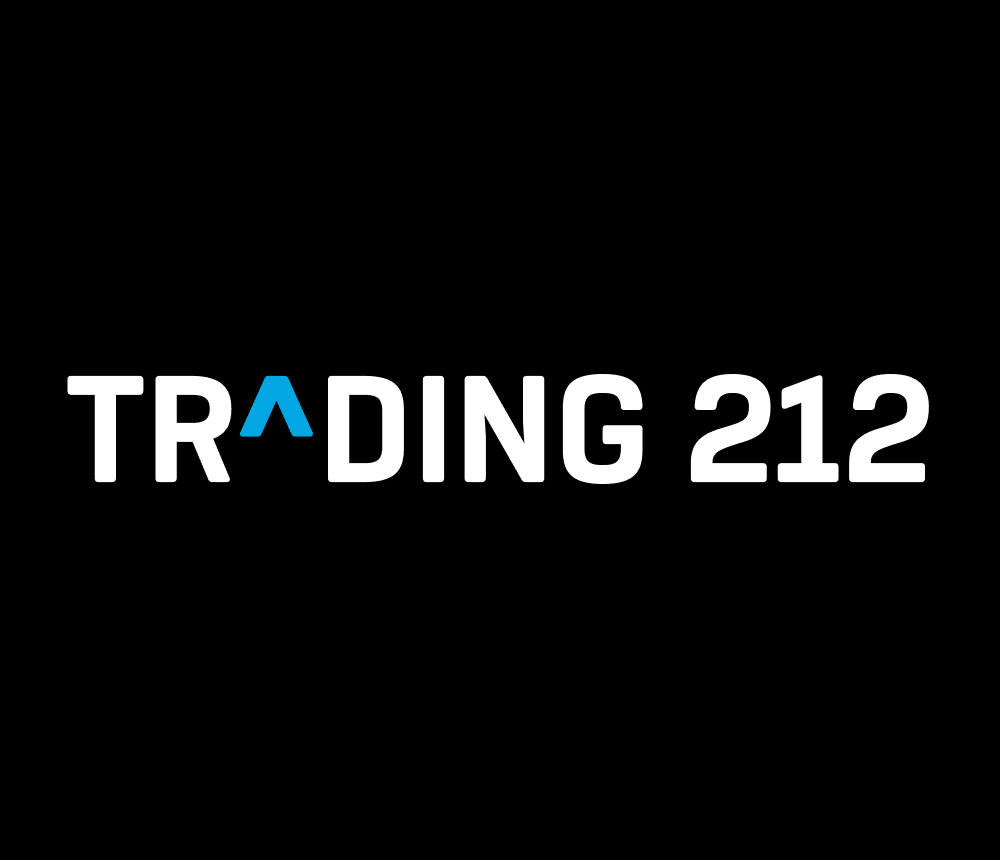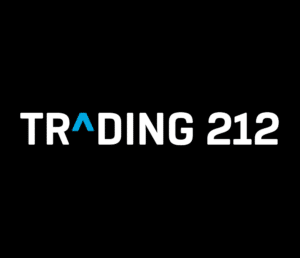Investing for Beginners - A Guide for UK Investors

Thomas Drury
Co-Founder
Seasoned finance professional with 10+ years' experience. Chartered status holder. Proficient in CFDs, ISAs, and crypto investing. Passionate about helping others achieve financial goals.
Twitter ProfileAuthor Bio

Dom Farnell
Co-Founder
Dom is a Co-Founder and of TIC. A passionate investor and seasoned blog writer with a keen interest in financial markets and wealth management.My goal is to empower individuals to make informed investment decisions through informative and engaging content.
Twitter ProfileAuthor Bio
How We Test
At The Investors Centre, we pride ourselves on our rigorous fact-checking process. To delve deeper into our meticulous testing procedures and discover how we ensure accuracy and reliability, visit our dedicated page on how we test.

Please bear in mind that the value of investments can decrease in addition to increasing, which means there is a possibility of receiving an amount lower than your initial investment. It is generally advisable to retain your investments for a minimum of five years in order to maximize the likelihood of achieving your desired returns. Capital at risk.
Quick Answer: How to Start Investing as a Beginner?
- Educate Yourself: Begin with learning the basics of investing, including different types of investments (stocks, bonds, mutual funds), and understanding risk versus return.
- Set Clear Goals: Define what you’re investing for, whether it’s retirement, a house, or another goal. This will guide your investment strategy and timeline.
- Start Small and Diversify: Don’t feel pressured to invest large sums. Start with an amount you’re comfortable with and focus on building a diversified portfolio to spread risk.
- Choose the Right Investment Platform: Select a beginner-friendly platform that offers educational resources, low fees, and easy-to-use tools.
- Consider Low-Cost Index Funds or ETFs: These funds are a great starting point for beginners due to their built-in diversification and lower risk compared to individual stocks.
- Stay Disciplined and Patient: Investing is a long-term journey. Avoid making hasty decisions based on short-term market fluctuations.
- Regularly Review and Adjust Your Portfolio: As you gain more experience and your financial situation changes, adjust your investments accordingly.
Remember, every investor starts somewhere, and making informed, mindful decisions is key to a successful investing journey.
Page Contents:
Welcome to The Investors Centre’s comprehensive guide tailored for those taking their first steps into the world of investing, specifically within the UK market. Navigating the investment landscape can be both thrilling and overwhelming, especially when you’re just getting started. That’s why we’ve created this article: to equip you with the knowledge and tools you’ll need to make well-informed investment decisions.
Investing is more than just a way to make money; it’s a strategy to build wealth over time and secure your financial future. With interest rates in traditional savings accounts being notoriously low, particularly in the UK, investing offers an alternative route to grow your capital. However, it’s essential to approach investing with the right mindset and information. Making informed decisions can not only amplify your returns but also mitigate the risks involved.
In the following sections, you’ll find an in-depth look at various investment platforms suitable for beginners, what investing actually entails, why it’s important, and how you can tailor an investment strategy that fits your needs and risk tolerance. Whether you’re interested in stocks, bonds, real estate, or other investment vehicles, this guide aims to be your one-stop-shop for all things related to investing.
Stay tuned as we delve into the essentials of investing for beginners in the UK. By the end of this guide, you’ll be well-equipped to start your investment journey with confidence and clarity all your eggs through.
Investment Platforms for Beginners Comparison Chart
Regulator | FCA | FCA | FCA | FCA | FCA |
Mobile App Usability | 5/5 | 4.5/5 | 4.6/5 | 4/5 | 3.5/5 |
Variety of Assets | Stocks, cryptocurrencies, CFDs | 12,000+ global stocks & ETFs, commodities, forex | Stocks 3000+, ETF's 1000+ | 1,000+ ETFs, Stocks (UK & International), Bonds, Ethical Investments | 18,000+ markets, stocks, ETFs, commodities, currencies, bonds, funds |
ISA Available | Yes (in conjunction with Moneyfarm) | Yes | No | Yes | Yes |
Trust Pilot Score | 4.3/5 | 4.6/5 | 4.8/5 | 4.7/5 | 4./5 |
Fee Score | 4/5 | 4/5 | 4.5/5 | 4.2/5 | 4/5 |
Overall Review Score | 4.7/5 | 4.5/5 | 4.4/5 | 4.4/5 | 3.9/5 |

TIC Trading 212 Score 4.5/5
Use code TIC to get a free share worth up to £100
Trading 212 - Best for beginners and casual investors
Trading 212 is an online brokerage platform that allows individuals to trade a wide range of financial instrument.
Pros
Cons
- Extensive Asset Range: Trading 212 offers a diverse range of over 12,000 global stocks and ETFs, along with commodities and forex markets. This variety caters to different investment preferences and strategies.
- User-Friendly Platform: The platform is known for its user-friendly interface, making it accessible for both beginners and experienced traders.
- Commission-Free Trading: Trading 212 offers zero commission trading on stocks and ETFs, making it an attractive option for cost-conscious investors.
- ISA Offering
- Demo Account
- Low Minimum Deposit: With a minimum deposit of just £1, Trading 212 is accessible to investors with limited capital.
- Limited Advanced Features: While user-friendly, the platform may lack some advanced features and tools that more experienced traders seek.
- Deposit Fee for Large Amounts: While there are no fees for smaller deposits, a fee of 0.7% is applied to certain payment methods for deposits over £2,000.
- No Pension Accounts: Currently, Trading 212 does not offer pension accounts like SIPPs, which might be a drawback for those planning for retirement.
Please bear in mind that the value of investments can decrease in addition to increasing, which means there is a possibility of receiving an amount lower than your initial investment. It is generally advisable to retain your investments for a minimum of five years in order to maximize the likelihood of achieving your desired returns. Capital at risk.

TIC Lightyear Score 4.5/5
Lightyear - Best Overall Investment App
Lightyear is a user-friendly and low-cost trading platform that offers a range of stocks and ETFs, with a focus on simplicity and accessibility for beginners. It stands out for its multi-currency account feature, competitive fees, and the unique advantage of earning interest on uninvested cash.
Pros
Cons
- User-Friendly Interface: Lightyear's app is designed for ease of use, making it ideal for beginners and those new to investing.
- Low Trading Fees: The platform offers low commission fees for trading, including 0% commission for ETFs, making it a cost-effective choice.
- Interest on Uninvested Cash: A unique feature where users can earn competitive interest rates on their uninvested cash balances.
- Multi-Currency Accounts: Lightyear provides the flexibility of multi-currency accounts, allowing for investments in different currencies and reducing the need for constant currency conversions.
- Access to International Markets
- Limited Investment Options: The platform primarily focuses on stocks and ETFs, lacking other investment options like bonds, mutual funds, or cryptocurrencies.
- No ISA or Pension Accounts: Currently, Lightyear does not offer tax-efficient accounts like Stocks and Shares ISAs or Self-Invested Personal Pensions (SIPP).
- Limited Educational Resources: Compared to some competitors, Lightyear offers fewer educational materials for those looking to learn more about investing.
Please bear in mind that the value of investments can decrease in addition to increasing, which means there is a possibility of receiving an amount lower than your initial investment. It is generally advisable to retain your investments for a minimum of five years in order to maximize the likelihood of achieving your desired returns. Capital at risk.

TIC Interactive Investor Score 4.2/5
Interactive Investor - Best suited for active, experienced investors
Interactive Investor is a well-established UK-based investment platform offering a comprehensive range of investment options including stocks, funds, and ETFs, along with a variety of ISA and pension products. Known for its fixed-fee pricing structure, it caters well to both active traders and long-term investors, providing extensive research tools and resources.
Pros
Cons
- Wide Range of Investment Options: Offers a vast array of investment choices including stocks, ETFs, funds, and bonds, catering to diverse investment strategies.
- Variety of Account Types: Provides several account options including Stocks & Shares ISA, SIPP, and Junior ISA, making it suitable for different financial goals and tax-efficient investing.
- Fixed-Fee Pricing Structure: Interactive Investor's fixed-fee model can be cost-effective, especially for high-value portfolios and frequent traders, as it avoids the percentage-based fee structure.
- Extensive Research and Tools:Offers robust research tools, expert insights, and comprehensive market analysis, which are invaluable for informed investing decisions.
- High Customer Service Rating
- Higher Fees for Small Portfolios: The fixed-fee model can be relatively expensive for investors with smaller portfolios, as the fee constitutes a higher percentage of smaller investments.
- Complex Fee Structure: The tiered subscription system and various additional charges for certain services can be complex and difficult to navigate for some users.
- Limited International Trading: While offering a range of UK investments, its options for international trading are somewhat limited compared to some competitors.
Please bear in mind that the value of investments can decrease in addition to increasing, which means there is a possibility of receiving an amount lower than your initial investment. It is generally advisable to retain your investments for a minimum of five years in order to maximize the likelihood of achieving your desired returns. Capital at risk.
Criteria for Choosing an Investment Platform
When it comes to selecting a platform, three criteria stand out:
Cost-Effectiveness: Platforms come with various fees and charges. This can range from transaction fees to annual management charges. As a beginner, you’ll want a platform that provides value for the money you’re investing. Look out for low fees or commission-free trading, as these can maximize your returns, especially when you’re starting with a smaller investment capital.
User Interface: An intuitive user interface is crucial, especially if you’re a beginner. Overly complicated platforms can make the investment process stressful and error-prone. User-friendly platforms offer easy navigation, clear instructions, and helpful customer service to guide you through any challenges you might face.
Types of Investment Options: As a beginner, you might start with straightforward investment options like stocks or bonds. However, as you gain more experience, you may want to diversify into other asset classes such as real estate, mutual funds, or even cryptocurrencies. Choose a platform that offers a wide variety of investment choices, giving you the flexibility to adapt your portfolio as you learn and grow.
Platform 1: Trading 212
Overview and Unique Selling Points: Trading 212 has gained popularity for its user-friendly design and commission-free trading. Ideal for beginners, the platform offers a plethora of educational resources, including tutorials and real-time market data, helping users make informed decisions.
Cost Structure: One of the platform’s key advantages is its zero-commission model. You can buy and sell stocks, ETFs, and other securities without paying a fee per trade. However, it’s essential to consider the currency conversion fees if you’re trading in markets outside the UK.
Types of Investments Available: Trading 212 offers a robust range of investment options, including stocks, ETFs, forex, and even cryptocurrencies. The platform’s versatility makes it a fantastic starting point for beginners looking to dip their toes in various investment waters.
Platform 2: Interactive Investor
Overview and Unique Selling Points: Interactive Investor stands out for its extensive research offerings and diverse investment options. Catering to both beginners and seasoned investors, the platform provides value through detailed analysis and expert recommendations.
Cost Structure: Interactive Investor operates on a fixed monthly fee model. While this fee covers an extensive array of services, including transactions, it may not be cost-effective for those who are starting with a small amount of investment capital.
Types of Investments Available: Interactive Investor offers a wide array of investment vehicles, from individual stocks and bonds to mutual funds and even pension plans. This variety allows you to build a diversified portfolio all within a single platform.
Platform 3: IG
Overview and Unique Selling Points: IG is renowned for its advanced trading technology and broad market access. While it may be more suited for those with some trading experience, its comprehensive educational content can help beginners ramp up quickly.
Cost Structure: IG offers competitive pricing, with reduced fees for more active traders. However, the platform does charge a small commission for trading shares. If you’re interested in derivatives like CFDs, be mindful of the higher risk and additional costs involved.
Types of Investments Available: IG’s broad spectrum of investment options includes shares, indices, forex, and commodities. For the more adventurous, they also offer options and futures contracts. This extensive range provides flexibility but requires a more hands-on approach to managing your investments.
By considering the criteria outlined and the unique features of each platform, you can select the one that best aligns with your investment goals and experience level.
What Are Investment Platforms?
In the modern era, platforms have become the gateway for individual investors to participate in financial markets. These platforms serve as intermediaries, facilitating trades and offering various financial products for you to invest in. As a beginner, understanding what these platforms are and how they differ can help you make a more informed choice. In this section, we delve into the evolution of platforms, the features and tools that can aid your investment journey, and how to choose a platform that best suits your needs.
Traditional vs. Online Platforms: The Evolution from Traditional to Online
Traditionally, investments were made through brokerage firms that operated physical offices. These brokers acted as gatekeepers, executing trades on your behalf. However, this model had its limitations: high fees, limited access to real-time information, and a restricted range of investment options.
With the advent of the internet, the investment landscape has drastically changed. Online platforms have democratized investing, providing instant access to a plethora of financial instruments right at your fingertips. Not only do they offer lower fees due to reduced overhead, but they also provide a more streamlined and user-friendly experience.
Online platforms are increasingly becoming the norm, especially among the younger generation who value the convenience and accessibility they offer. However, some traditional brokerages have adapted by developing their own online platforms, creating a hybrid model that combines the reliability and expertise of a traditional brokerage with the speed and convenience of an online platform.
Features and Tools: The Toolbox for Modern Investors
The best investment platforms offer a range of features and tools designed to empower you to make well-informed decisions. Here are some to look out for:
Charting Tools: Visual representations of market data can help you identify trends and make predictions. Sophisticated platforms offer customizable charts with multiple indicators, enabling deep technical analysis.
News Feeds: Keeping abreast of market news is crucial for any investor. Many platforms offer real-time news feeds that aggregate information from reliable sources, helping you stay informed.
Screeners: Stock screeners allow you to filter investments based on various criteria like market cap, industry, dividend yield, and more, making it easier to find opportunities that align with your strategy.
Portfolio Analytics: Some platforms provide detailed analytics on your portfolio, including performance over time, asset allocation, and risk analysis. This can be invaluable for fine-tuning your investment strategy.
How to Choose an Investment Platform
Key Criteria Revisited
We’ve touched on some general criteria for selecting an investment platform earlier, but let’s delve deeper:
Cost-Effectiveness: Consider all the fees—transaction fees, annual management charges, and any hidden costs. Platforms with low or zero fees may offer fewer features, so balance cost against what you need.
User Interface: User experience is not just about ease of use; it’s also about ease of understanding. Platforms should offer intuitive navigation, but also provide sufficient detail and customization for those who want to dig deeper.
Investment Options: The range of available investment options can significantly influence your ability to diversify your portfolio. Look for platforms that offer a wide range of asset classes, including alternative investments like real estate or cryptocurrencies, if that aligns with your risk profile.
Choosing the right platform is a crucial first step in your investment journey. It not only impacts your user experience but also your investment performance in the long run. Make sure to select a platform that aligns well with both your current needs and long-term financial goals.
What Is Investing?
If you’re new to the financial world, the term “investing” might seem overwhelming or even intimidating. But investing is, fundamentally, an act of faith in the future—a decision to allocate your money in a way that has the potential for profitable returns. Understanding what investing is, why it’s important, and the various types of investments that exist can help set the stage for your financial journey. In this section, we explore these critical aspects of investing.
Definition of Investing
At its core, investing involves allocating resources, usually money, into assets or endeavours with the expectation of generating returns or income over time. Unlike saving, where the focus is on the preservation of your money, investing aims at growing your money. Investments can take on various forms, from stocks and bonds to real estate and mutual funds. The objective is to put your money to work in vehicles that will yield returns, effectively making your money “work” for you.
It’s essential to recognize that investing involves risks. The value of your investments can go up, but they can also go down. Therefore, it’s crucial to have a well-thought-out investment strategy and risk management plan in place. While there’s no guaranteed outcome in investing, a well-planned approach increases the chances of achieving your financial goals.
Why Should I Invest?
Building Wealth: The primary reason people invest is to build wealth over time. Due to the power of compound interest, even small, consistent investments can grow into significant sums. For example, investing £200 per month at a 7% annual return would yield approximately £302,000 after 30 years. The earlier you start, the more time your money has to grow, enhancing the compounding effect.
Beating Inflation: Inflation is the rate at which the cost of goods and services rises, eroding the purchasing power of money. In the UK, a traditional savings account rarely offers interest rates that outpace inflation. Therefore, keeping all your money in a savings account over the long term means you’re effectively losing money. Investing offers an avenue to earn returns that can outperform inflation, thus preserving your purchasing power.
Financial Independence: Investing is also a path toward financial independence. The income generated from your investments can, over time, become a significant revenue stream. Many people aim to build an investment portfolio large enough to provide for their living expenses without needing to actively work, thereby achieving financial freedom.
Types of Investments
Stocks: When you purchase a stock, you’re buying a share of ownership in a company. Stocks have the potential for high returns but come with higher volatility and risk. They are best suited for long-term investment strategies.
Bonds: Bonds are debt securities that pay periodic interest and return the principal amount at maturity. They are generally considered safer than stocks but offer lower potential returns. Bonds can be a good option for those looking for more stable, predictable income.
Real Estate: Investing in real estate involves purchasing property to generate income or capital appreciation. Real estate can offer diversification benefits and is usually less correlated with stock and bond markets. However, it requires significant capital and comes with its own set of risks, like property management and market fluctuations.
Mutual Funds: A mutual fund pools money from multiple investors to buy a diversified portfolio of stocks, bonds, or other assets managed by professional portfolio managers. Mutual funds offer diversification and professional management but come with management fees that can eat into your returns.
Understanding these basic investment types can help you make informed decisions as you start building your portfolio. While it might be tempting to dive into the most exciting or trendy investment options, it’s critical to align your investments with your financial goals and risk tolerance.
What Should a Beginner Invest In?
One of the most frequently asked questions by investing newcomers is, “What should I invest in?” Your ideal investment choices should align with your financial goals, risk tolerance, and time horizon. Investing isn’t a one-size-fits-all approach; different asset classes cater to various risk profiles and yield potential returns accordingly. As a beginner, it’s imperative to familiarize yourself with the risk and reward dynamics of various investment options. In this section, we delve into low-risk, moderate-risk, and high-risk investments to help you understand where you might want to start.
Low-Risk Investments
Bonds: Government and corporate bonds are considered low-risk investments. When you purchase a bond, you’re effectively lending money to the issuer—either the government or a corporation—in exchange for periodic interest payments and the return of the bond’s face value when it matures. Bonds are relatively stable but offer lower potential returns compared to riskier assets like stocks.
Certificates of Deposit (CDs): Certificates of Deposit are time-bound deposit accounts offered by banks with a fixed interest rate higher than regular savings accounts. Since they have a fixed tenure and interest rate, CDs offer predictable, guaranteed returns. However, you cannot withdraw your money without penalty until the CD reaches its maturity date, making them less liquid.
Money Market Accounts: Money market accounts are interest-bearing deposit accounts that offer a higher interest rate than traditional savings accounts. These accounts often come with checks and debit card options, although they are subject to transaction limits.
Low-risk investments are ideal for conservative investors or those close to retirement who cannot afford to lose their principal. However, the trade-off is that the potential returns are usually lower compared to higher-risk investments.
Moderate-Risk Investments
Index Funds: Index funds are a type of mutual fund designed to replicate the performance of a specific market index. They offer the benefits of diversification and usually come with lower fees compared to actively managed funds. They are considered moderate-risk because they expose you to the broader market’s volatility but also offer the potential for solid long-term returns.
Exchange-Traded Funds (ETFs): ETFs are similar to index funds but trade on stock exchanges, making them more liquid. They cover various asset classes and sectors, offering a balance between risk and reward. ETFs are a good option for those looking for diversification without the hassle of picking individual stocks.
Real Estate Investment Trusts (REITs): REITs are companies that own or finance income-producing real estate across various property sectors. They are known for paying high dividends and offer a way to invest in real estate without having to own and manage properties. However, they can be sensitive to interest rate changes.
Moderate-risk investments can provide a good balance of risk and reward for investors with a medium-term time horizon and a moderate appetite for risk.
High-Risk Investments
Individual Stocks: Investing in individual stocks means you’re buying shares of specific companies. While the potential for high returns is significant, so is the level of risk. Stock prices can be highly volatile and are affected by various factors such as company performance, market conditions, and global events.
Cryptocurrency: Cryptocurrencies like Bitcoin and Ethereum are digital or virtual currencies using cryptography for security. They are considered high-risk due to their extreme volatility. While some people have made substantial profits, many have also incurred huge losses.
Venture Capital and Start-ups: Investing in start-ups or venture capital funds can offer very high returns but come with a high level of risk and illiquidity. These investments are usually long-term commitments and often lack a secondary market, making them suitable only for those who can afford to lock up their capital and take on a higher level of risk.
High-risk investments are suitable for those who have a high-risk tolerance and are looking for significant returns. However, it’s crucial to only invest money that you can afford to lose.
By understanding these investment categories, you can better tailor your portfolio to your risk tolerance and financial objectives. Diversifying managed portfolios across these different types of investments may also help you achieve more stable returns over time.
What Kind of Investment Strategy Could a New Investor Consider?
Investing isn’t just about what you invest in; it’s also about how you go about investing. Your investment strategy will significantly influence your success in growing your wealth. Various strategies cater to different financial goals, risk tolerances, and time horizons. In this section, we’ll explore long-term and short-term investing strategies and the importance of diversification. These foundational strategies can provide a roadmap for new investors looking to navigate the complexities of the financial markets successfully.
Long-Term Investing
Benefits: Long-term investing, often defined as holding an investment for five years or more, offers several advantages. Firstly, it allows investors to take advantage of the power of compound interest, where the interest earned on your investments is reinvested, leading to exponential growth over time. Secondly, long-term investing can be more tax-efficient, as capital gains from investments held for over a year are generally taxed at a lower rate compared to short-term gains.
Another benefit of long-term investing is that it typically involves lower transaction costs. Since you’re not frequently buying and selling, you’ll incur fewer brokerage fees. Additionally, long-term investing is generally less stressful than short-term strategies, as you’re less concerned with the stock market’s daily fluctuations.
Drawbacks: However, long-term investing isn’t without its drawbacks. Your money will be tied up for an extended period, reducing liquidity and potentially missing out on other investment opportunities. Furthermore, not all investments are suited for long-term holding. Companies or sectors can decline over extended periods, leading to capital losses.
Short-Term Investing
Benefits: Short-term investing involves holding investments for shorter periods, typically less than a year, to capitalize on expected upward or downward market shifts. One significant advantage of short-term investing is liquidity; you can quickly convert your investment back to cash. This strategy allows you to take advantage of market trends and anomalies that may offer quick profits.
Drawbacks: However, the risks are considerably higher in short-term investing. Market volatility can have a more significant impact on your investment, and the potential for both gain and loss is magnified. Additionally, short-term capital gains are usually taxed at a higher rate than long-term gains. Frequent trading also incurs higher transaction costs, which can eat into your profits.
Diversification
What It Is: Diversification involves spreading your investments across various asset classes like stocks, bonds, real estate, and others to reduce risk. The idea is that different assets will respond differently to economic events; some will go up while others will go down, providing a balancing effect.
Why It Matters: Diversification is often touted as the only “free lunch” in investing. It allows you to mitigate risks without necessarily sacrificing potential returns. For instance, if you’re invested solely in tech stocks and shares isa well, and the tech sector crashes, your portfolio will suffer significant losses. But if you’re diversified across different sectors and asset classes, the impact on your portfolio would be cushioned.
For new investors, diversification can be achieved relatively easily through index funds or ETFs, which offer broad market exposure across various sectors. As you gain more experience, you can start adding other asset classes like bonds or real estate to further diversify your portfolio.
In summary, your investment strategy should align with your financial goals, risk tolerance, and investment horizon. Whether you opt for a long-term or short-term strategy, or a mix of both, remember that diversification should be an integral part of your investment plan to help manage risks effectively.
Conclusion
Investing is a multifaceted journey, replete with opportunities and risks, that requires careful planning, informed decisions, and ongoing education. Whether you’re a beginner in the UK or elsewhere, understanding the basics—from the various types of investments and the platforms where you can invest, to the strategies and risk management techniques—is crucial for long-term success.
In this comprehensive guide, we’ve covered a range of topics that every new investor should consider:
Platforms: We delved into the features, benefits, and cost structures of three platforms suitable for beginners: Trading 212, Interactive Investor, and IG.
Types of Investments: From low-risk options like bonds and CDs to moderate-risk and high-risk alternatives like index funds, ETFs, and individual stocks, we’ve explored the landscape of investment options available to you.
Investment Strategies: We touched on the significance of short-term vs. long-term investing and the importance of diversification in risk mitigation.
FAQs: We answered some of the most pressing questions that beginner investors often have, such as the amount needed to start investing, the risks involved, and the impact of taxes on investments.
Investing is not just about making your money work for you; it’s also about aligning your financial activities with your life goals. Therefore, embark on your investment journey with thoughtfulness, armed with the best information, tools, and perhaps professional advice. Remember, every successful investor started as a beginner. You have the information—now take that first step wisely and carefully.
How Much Money Do I Need to Start Investing?
The idea that you need a substantial lump sum amount of money to start investing is a common misconception. Thanks to the rise of online investment platforms and the availability of various financial products, you can start investing with as little as a few pounds. Some robo-advisors and online brokers even allow you to invest in fractional shares of stocks and ETFs, enabling you to become an investor without breaking the bank.
However, while you can technically start with a small amount, the amount you should start with depends on your financial goals and the kind of investments you’re interested in. More significant investments in diversified funds or individual name stocks and shares may require a more substantial initial investment. It’s essential to evaluate your financial position and long-term objectives before deciding the amount you’re comfortable investing.
Is Investing Risky?
Investing inherently involves some level of risk; there’s always the possibility of losing money. The degree of risk varies depending on the asset class and the specific investment. For example, government bonds are generally considered low-risk, whereas individual stocks and cryptocurrencies are high-risk investments.
It’s crucial to understand your risk tolerance—your emotional and financial capacity to withstand investment losses—before making any investment decisions. A well-diversified portfolio can help mitigate risks, but it can’t eliminate them entirely.
A key principle is that higher risk usually correlates with higher potential returns, but it also comes with increased volatility. As a new investor, educating yourself and possibly consulting a financial advisor can help you manage risks effectively.
How Do I Monitor My Investments?
In the digital age, monitoring your investments has never been easier. Most investment platforms offer mobile apps and web interfaces that provide real-time data, analytics, and performance metrics. You can track your portfolio’s performance, review individual assets, and even set up alerts for price changes or news that could impact your investments.
However, while technology makes it convenient to constantly monitor your investments, doing so can also lead to emotional decisions, especially if you’re new to investing. Markets fluctuate daily, and short-term volatility should not dictate long-term investment strategies.
Experts often recommend periodic reviews—perhaps quarterly or annually—to assess performance and make necessary adjustments. This approach can be especially beneficial for long-term investors.
Can I Lose Money While Investing?
The short answer is yes; you can lose money while investing. The financial and stock markets are influenced by a myriad of factors, including economic indicators, interest rates, and geopolitical events, among others. All these factors contribute to market volatility, which can lead to investment losses.
However, there are several strategies to mitigate the risk of losing money. Diversification, as mentioned earlier, is a critical factor. By spreading your investments across various asset classes and sectors, you can cushion the blow of poor performance in any single stock exchange or area.
It’s also important to maintain a disciplined approach, avoiding emotional decision-making triggered by market volatility. Creating and sticking to an investment strategy aligned with your financial goals and risk tolerance can go a long way in safeguarding your investments.
In summary, while investing comes with inherent risks, being well-informed and strategic can help you manage these risks effectively.
What Are the Costs Associated With Investing?
Investing is not without its costs, and it’s crucial to be aware of these to make the most out of your investments. Costs can eat into your returns and have a significant impact over time. Fees can vary depending on the investment platform, asset type, and other services you may use.
Here are some common costs to consider:
Transaction Fees: These are the fees you’ll pay every time you buy or sell an investment.
Management Fees: Many managed funds and robo-advisors charge a percentage of the total account value for their services.
Expense Ratios: These are ongoing fees charged by mutual funds or ETFs, usually expressed as a percentage.
Account Maintenance Fees: Some brokers charge fees for account upkeep, especially if your account falls below a certain balance.
Always read the fine print and be clear about the fees you’re paying. High costs don’t always equate to high returns, so weigh the costs against the potential benefits of any investment option.
Should I Consult a Financial Advisor?
The decision to consult a financial advisor depends on various factors, including the complexity of your financial situation, your investment goals, and your level of financial literacy. Financial advisors can offer valuable insights, especially for complex topics like tax planning, estate planning, and long-term financial planning. They can help you align your investment strategy with your broader financial goals, offering tailored advice that generic online guides can’t provide.
However, financial advisors also come at a cost, which could be a flat fee, an hourly rate, or a percentage of assets managed. It’s crucial to weigh these costs against the benefits you expect to receive. If you’re just starting with a small investment and you’re willing to educate yourself, you might choose to start without professional advice. Many online platforms offer educational resources that are sufficient for beginning investors.
What Is the Difference Between Active and Passive Investing?
Active and passive investing are two main strategies that differ in approach, costs, and potential returns.
Active Investing: This involves frequent buying and selling of assets to beat the market or achieve specific investment objectives. Active investing often requires a hands-on approach, whether by you or a fund manager, and usually incurs higher fees due to the frequent trades and active management.
Passive Investing: In contrast, passive investing aims to match the market performance. This can be achieved by investing in index funds or ETFs that track the performance of a specific market index. Passive investing is usually cheaper in terms of fees and is often recommended for beginners due to its simplicity and lower cost.
Your choice between active and passive investing will depend on your financial goals, risk tolerance, and the level of involvement you desire in managing your investments.
How Do Taxes Affect My Investments?
Taxes can have a significant impact on your net investment returns. In the UK, you may be subject to Capital Gains Tax when you sell an investment for a profit. The rate varies depending on your income and the type of asset. Some investments like ISAs (Individual Savings Accounts) and pensions offer tax advantages.
Dividend income may also be subject to tax, depending on your overall income and tax bracket. Understanding tax implications can be complex but is crucial for maximizing your returns.
You can offset some of your capital gains with capital losses, under tax rules so it’s crucial to keep accurate records of all transactions. Some investment accounts offer tax-deferred growth, meaning you won’t pay taxes until you withdraw the funds, usually at retirement.
Understanding the tax implications of your investments is complex but crucial for maximizing your returns. Consulting a tax advisor for tailored advice is often recommended.
By being proactive about understanding and planning for these various elements, you can make more informed choices that align with your investment strategy and financial goals.
FAQs
Answer: Before you start, understand the basics of different investment types (stocks, bonds, mutual funds, etc.), the concept of risk versus return, and the importance of diversification. Also, be clear about your financial goals and risk tolerance.
Answer: You don’t need a large sum to start; many online platforms allow you to begin with small amounts. The key is to invest consistently over time, even if it’s a small amount regularly.
Answer: Choose a platform that is user-friendly, offers educational resources, and has low fees. Platforms that allow fractional investing can be a good choice if you’re starting with a small amount.
Answer: As a beginner, you might consider starting with mutual funds or exchange-traded funds (ETFs). These provide instant diversification, which is safer than putting all your money into individual stocks.
Answer: Diversify your investments across different asset classes and industries. Don’t invest money you might need in the short term, and be prepared to stay invested for the long haul. Regularly reviewing and adjusting your portfolio based on market changes and your personal financial situation can also help manage risk.



